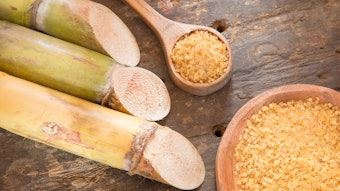Butyl acetate: The use of lower aliphatic esters to create fruit flavors is most interesting and intriguing. Many of the flavors of our common fruits can be mimicked using a number of mixtures of completely different groups of these esters. This anomaly results from the fact that except for a few unique fruits (lemons-citral), the flavors of most fruits are a complex mixture of esters and other aroma chemicals. Because many of the lower aliphatic esters (C2-C5 alcohols) possess similar and overlapping fruity characteristics, mixtures of these esters can be utilized to create a particular type of fruit flavor, even when the major components of that mixture do not appear as part of that fruit’s natural constituent’s analysis. Remember those strange pineapple-flavored candies you ate as a child?
All of the lower aliphatic esters C3-C5 bear a common theme; they are usually ethereal in nature, i.e. volatile and short-lived on the blotter. The terms used for organoleptic descriptions are usually based upon our experiences with foodstuffs in many Western-European based cultures. Since all these esters are found mainly in the fruits consumed in those areas, terms of organoleptic description employed include such terms as: apple, pear, banana, pineapple, strawberry and raspberry. A review of the organoleptic descriptions of these aliphatic esters reveals that the descriptive terms used are very similar and interlaced; all the descriptions include ethereal-fruity. This common theme leads us to question why one structurally similar ester would be relatively popular in its use in flavors while another is relatively shunned. In the practical world, we find that secondary organoleptic characteristics in these esters have only a moderate influence on their use. It appears that their primary attributes, which are similar, and several other fortuitous currents combine to influence their use.
Thus, two esters with similar structures and slightly different secondary toning show surprisingly different usage patterns. Why these esters seem opposite in use development for structurally similar products is an interesting puzzle. The term opposite is used here to provoke the reader. In lower molecular weight chemicals there are only two types of opposites: chemical and chiral. In the fine chemical industry, we currently see an interest in optically active isomers or chiral opposites (right hand-left hand chemicals) as a focus of major activity. This is because the human body responds differently to one of the two antipodes of a chiral material, hence the interest in use of chiral materials in drugs. The organoleptic difference in chiral isomers is just recently becoming a subject of commercial interest in the flavor and fragrance area because it shows promise in the efforts to create better scent- and taste-targeted products.










